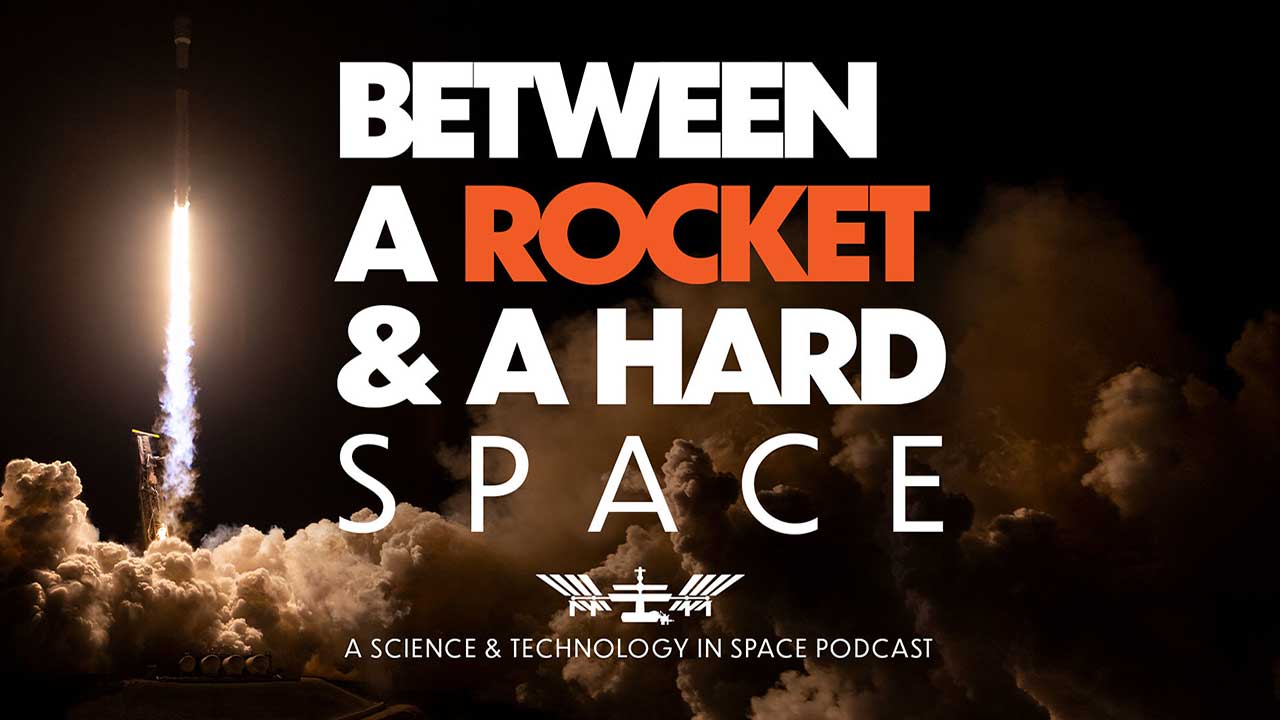Introducing Between a Rocket & a Hard Space : The ISS National Lab’s New Podcast Exploring the Future of Space Innovation

Podcast episodes will be available through major platforms like Apple Podcasts, iHeartRadio, Spotify, and many others—bringing the excitement of space-based research to the masses
March 26, 2025
KENNEDY SPACE CENTER (FL), March 26, 2025 – The International Space Station (ISSInternational Space Station) National Laboratory is launching a bold new way to bring the excitement of space-based research down to Earth—introducing Between a Rocket & a Hard Space, the official ISS National Lab podcast. This podcast series dives deep into the discoveries, innovations, and people shaping the future of space, with the first episode now available.
The podcast’s name is a nod to the challenges and complexities of exploring the space environment, with recognition of the far-reaching benefits space-based R&D may bring. Going beyond the launch pad, Between a Rocket & a Hard Space offers exclusive insights from scientists, engineers, and visionaries leveraging the unique environment of low Earth orbit(Abbreviation: LEO) The orbit around the Earth that extends up to an altitude of 2,000 km (1,200 miles) from Earth’s surface. The International Space Station’s orbit is in LEO, at an altitude of approximately 250 miles. to push the boundaries of research and technology development. But that’s just the beginning. We’ll also hear from policymakers driving the industry forward, financial experts fueling the space economy, and communicators working to inspire the next generation of explorers.
Hosted by Patrick O’Neill, public affairs and outreach lead for the ISS National Lab, Between a Rocket & a Hard Space makes space science engaging and accessible for all audiences. Since 2012, O’Neill has led communications for every space station resupply mission featuring ISS National Lab-sponsored payloads, working alongside hundreds of researchers and innovators. Now, he brings that firsthand experience and insight to each episode.
In the first episode, O’Neill sits down with ISS National Lab Chief Scientific Officer Michael Roberts to explore the groundbreaking science happening on the orbiting outpost and its real-world impact on medicine, technology, and industry. Roberts will provide an insider perspective into how microgravityThe condition of perceived weightlessness created when an object is in free fall, for example when an object is in orbital motion. Microgravity alters many observable phenomena within the physical and life sciences, allowing scientists to study things in ways not possible on Earth. The International Space Station provides access to a persistent microgravity environment. is unlocking advancements in drug development, regenerative medicine, advanced materials, and in-space manufacturing.
Episodes of Between a Rocket & a Hard Space will be available through many major listening platforms, including Apple Podcasts, Spotify, YouTube, iHeartRadio, Overcast, Pocket Casts, Castro, and Castbox. This initial episode and future series installments will explain how the science happening in space today is shaping a better tomorrow for all of us.
The ISS National Lab provides access and opportunity for researchers to leverage the unique space environment for the benefit of humanity and to enable commerce in space. To learn more about ISS National Lab-sponsored investigations flown on NASA-funded Commercial Resupply Services and Commercial Crew Program missions, visit our Missions and Launches webpage.
Download a high-resolution image for this release: Between a Rocket & a Hard Space
Media Contact:
Patrick O’Neill
904-806-0035
PONeill@ISSNationalLab.org
# # #
About the International Space Station (ISS) National Laboratory: The International Space Station (ISS) is a one-of-a-kind laboratory that enables research and technology development not possible on Earth. As a public service enterprise, the ISS National Laboratory® allows researchers to leverage this multiuser facility to improve quality of life on Earth, mature space-based business models, advance science literacy in the future workforce, and expand a sustainable and scalable market in low Earth orbit. Through this orbiting national laboratory, research resources on the ISS are available to support non-NASA science, technology, and education initiatives from U.S. government agencies, academic institutions, and the private sector. The Center for the Advancement of Science in Space™ (CASIS™(Abbreviation: CASIS™) The nonprofit organization that manages the ISS National Lab, which receives at least 50 percent of the U.S. research allocation on the International Space Station to facilitate research that benefits humanity (NASA manages the other 50% and focuses on research for space exploration purposes).) manages the ISS National Lab, under Cooperative AgreementA cooperative agreement is Federal assistance that establishes a relationship between the U.S. Government and a recipient in which the principal purpose of the relationship is to accomplish a public purpose of support or stimulation. Since 2011, the Center for the Advancement of Science in Space™ (CASIS™) has managed the National Laboratory® through a Cooperative Agreement with NASA. with NASANational Aeronautics and Space Administration, facilitating access to its permanent microgravity research environment, a powerful vantage point in low Earth orbit, and the extreme and varied conditions of space. To learn more about the ISS National Lab, visit our website.
As a 501(c)(3) nonprofit organization, CASIS accepts corporate and individual donations to help advance science in space for the benefit of humanity. For more information, visit our donations page.